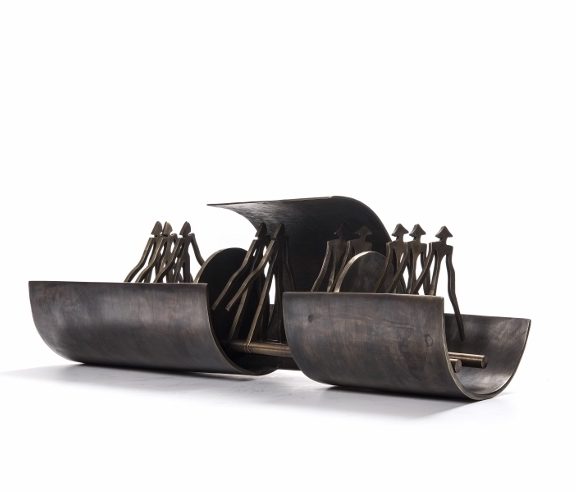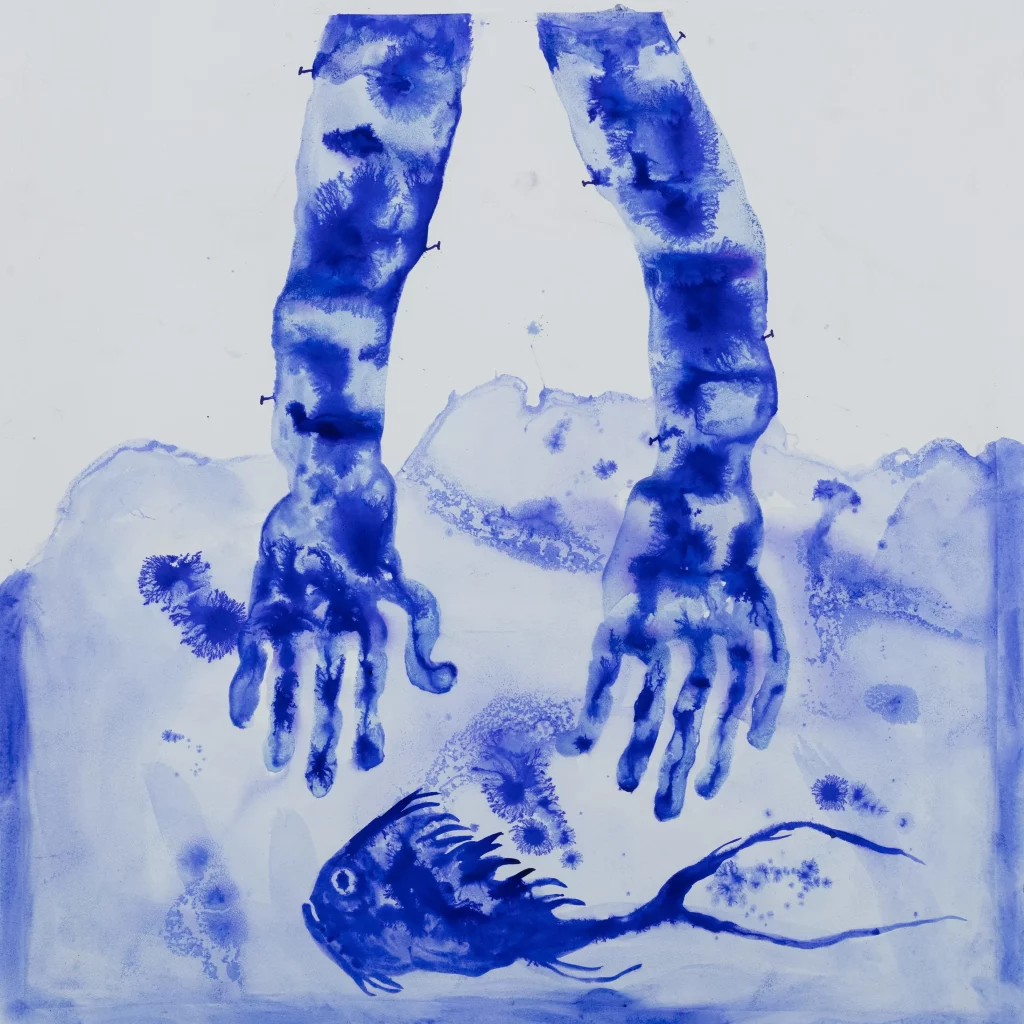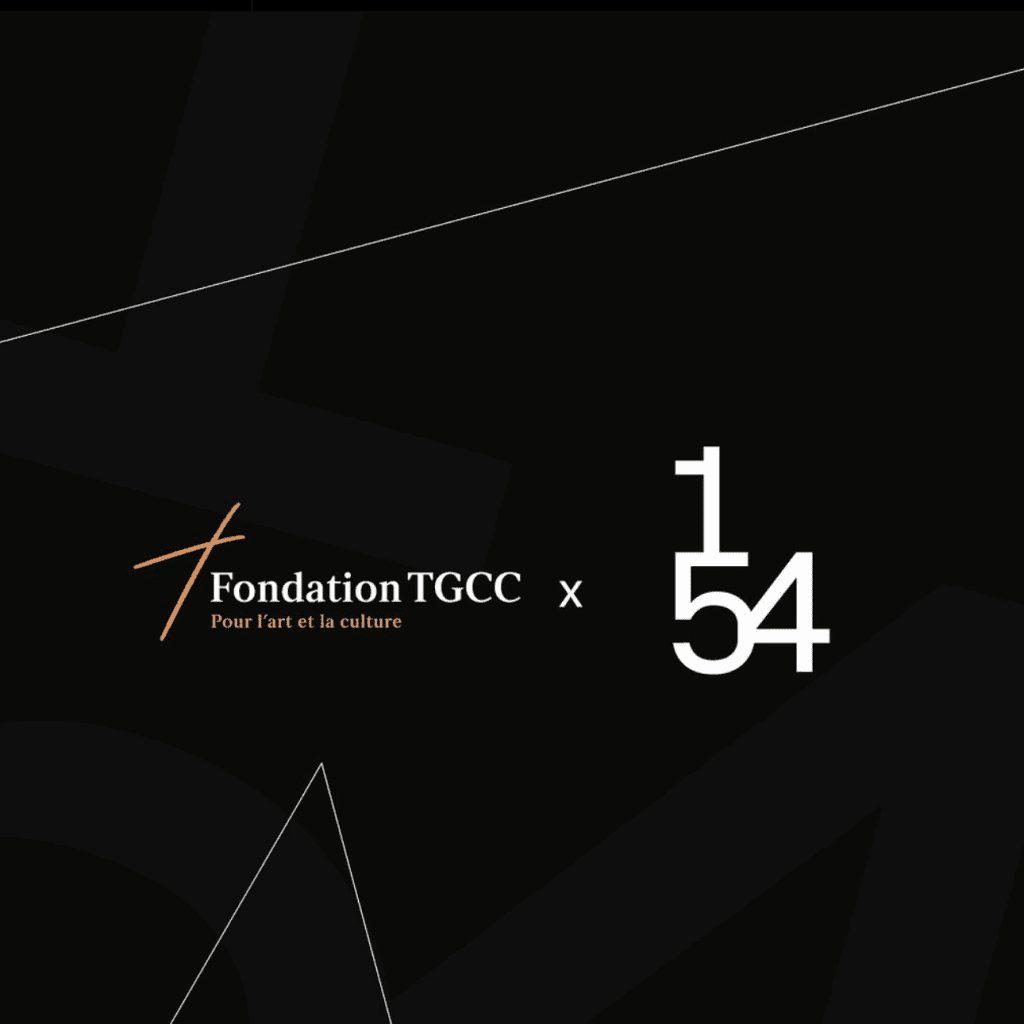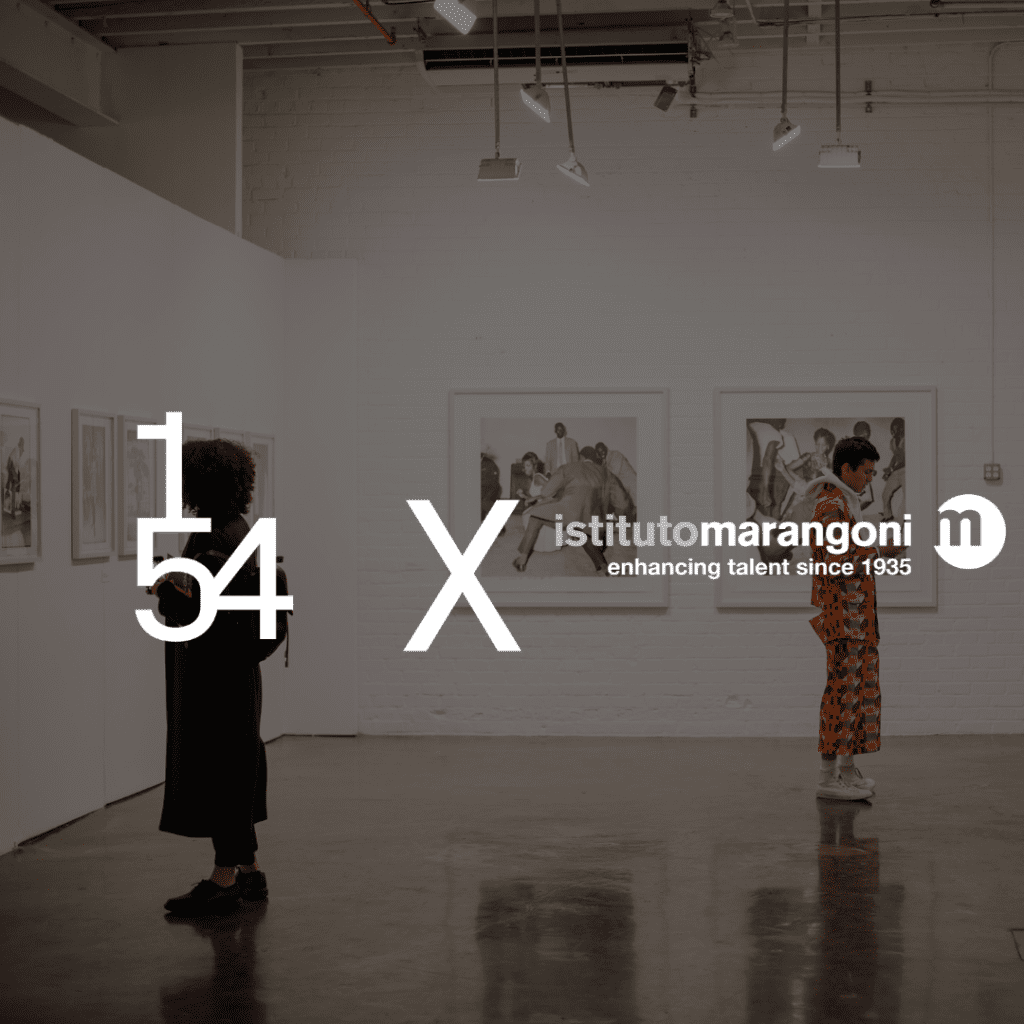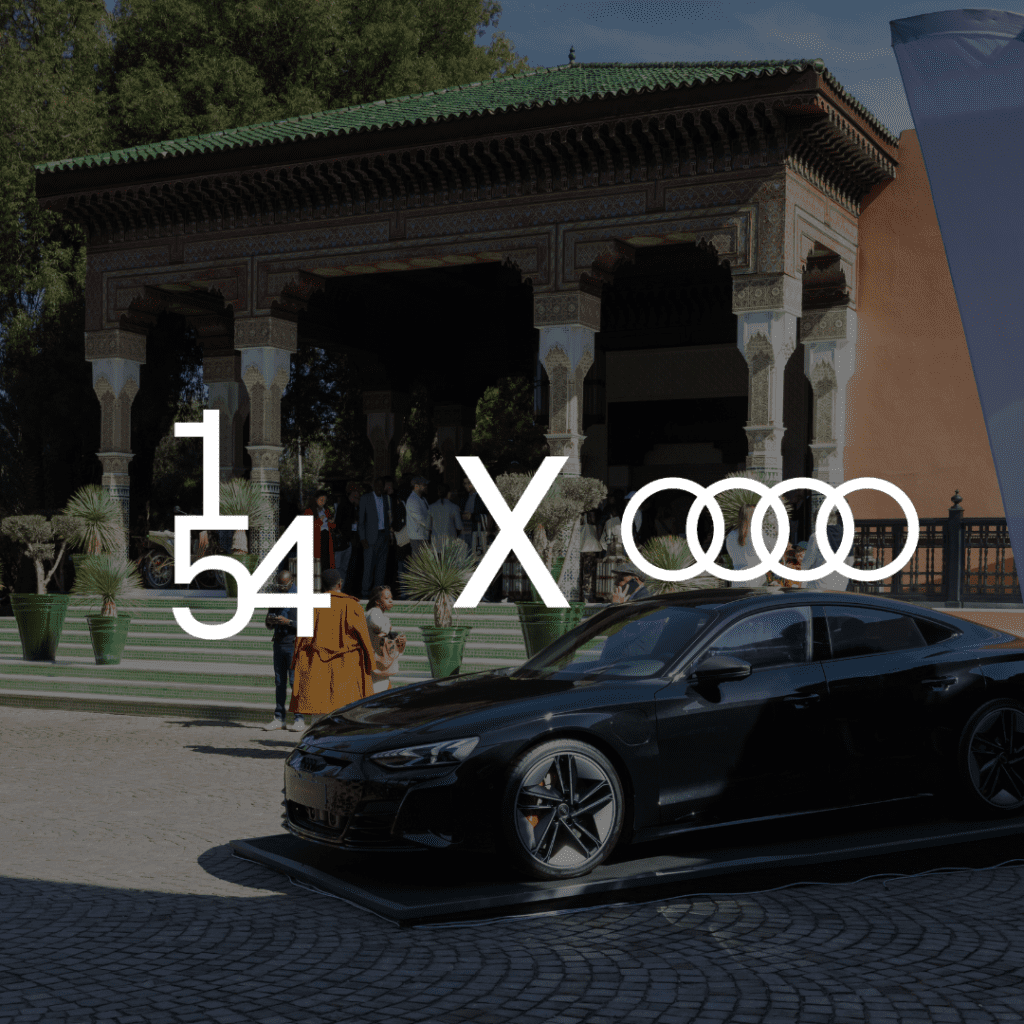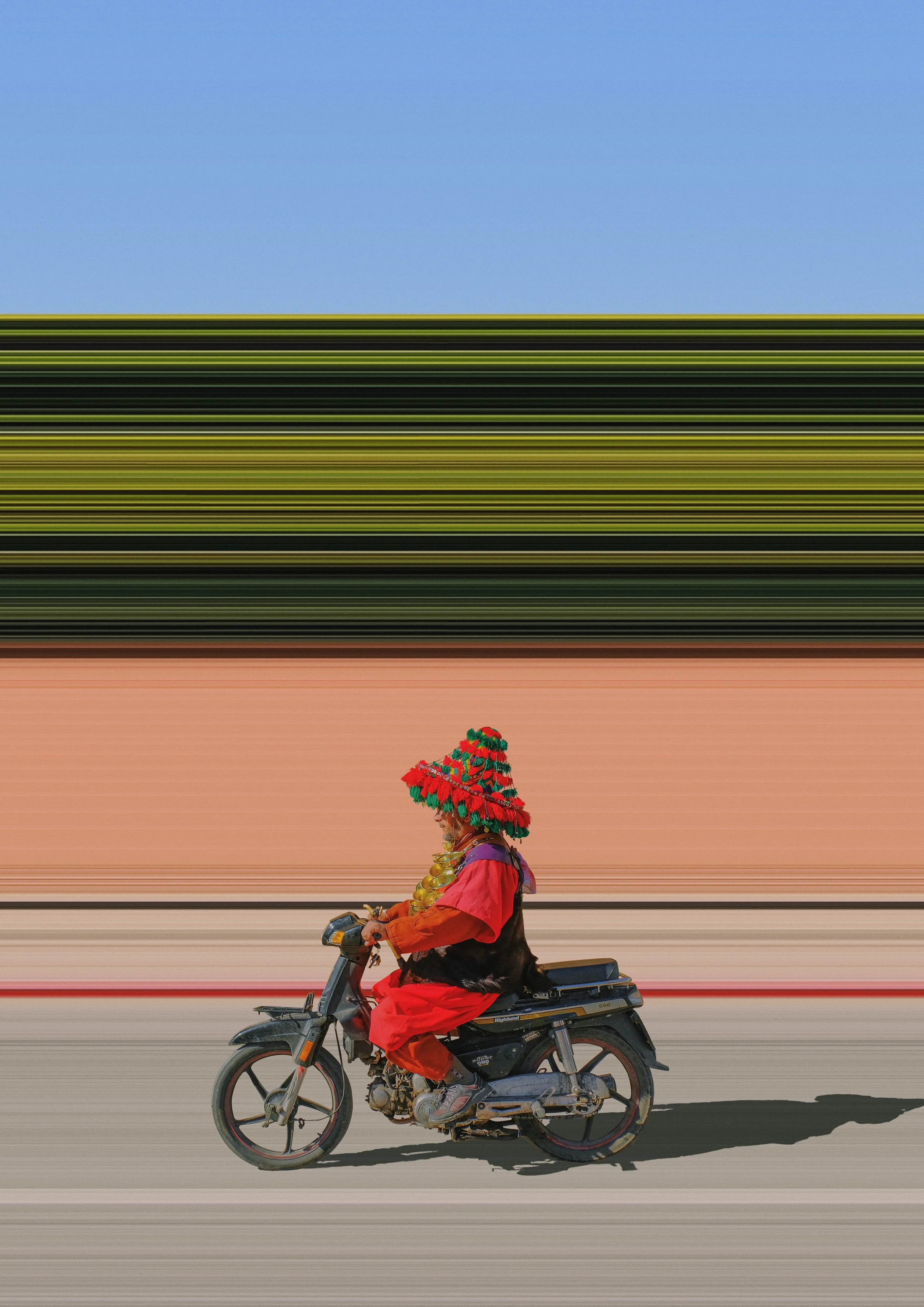The works of Egyptian artist Sayeda Khalil will be showcased at 1-54 Marrakech on the booth of Cairo-based UBUNTU art gallery.
Born in 1970, Khalil graduated from the Faculty of Art Education at Helwan University, having acquired her B.A., M.A. and PhD from the department. Her sculptural practice pays particular attention to materiality through experimentation with unconventional media such as lightsabers.
Khalil’s work has been exhibited widely in Egypt, and her work is in the permanent collection of the Museum of Modern Art, Cairo. In addition to her studio practice, Khalil is a professor within the Sculpture Department at the Faculty of Arts Education.

You produce powerful sculptures, smoothly shaping robust metals like bronze, brass, iron into rounded forms and outlines. How did you choose to work specifically with this medium?
The choice of medium is always related to the idea and concept of the artwork, and this selection is an expressive vision of the human conflict and a seeking of a way out or passing through such cases. Therefore, there was difficulty finding a relation between such opposed feelings of these human figures. It is from here that my choice of using bronze and copper comes to achieve this concept symbolising such pressures and situations in the form of circular geometric repetitive loops filled with ‘void’ and featuring congregated moving human figures queued in lines as searching for survival.

Metals can be worked in a variety of ways in the sculpting process. Casted, melted and poured into moulds; squeezed under pressure of dyes; or even directly worked by hammering, bending, cutting, welding. What is your chosen way of working them?
Usually the artist observes a perfect method to achieve their concept; each step-in production should support and identify the meaning and content of the artwork. My style and method of work is related to the concepts I work on which can be listed to several stages. First, I start with creating an example template of the piece, secondly, I produce a bronze copy through a mould, which may sometimes need welding especially sharp corners that need to be personally handled. The third stage focuses on creating several human figures by cutting large thick sheets of copper by laser. After finishing all details concerning the bronze piece and the human figures, I start using my own method to compose both the bronze piece and figures by hidden metal supports to assure the strength and consistency of the piece. All these stages primarily rely on various sketches and brainstorming for every individual piece.
What is the common thread behind your works?
All my concepts arise from a fantasised expressionism rather than reality. I’m always inspired by human feelings and relations and seek to simply represent them. People and life (visualised in geometric shapes) are the different elements of expressing the cases of human conflict on the personal and psychological level or the human relations or life’s variables.
There’s another common factor within the production of my artworks as I prefer to use direct formation and installation processes in order to create space that holds the concept of place regarding those human figures symbolising the controlling world that they live in.

“All art should have a certain mystery and should make demands on the spectator. Giving a sculpture or a drawing too explicit a title takes away part of that mystery so that the spectator moves on to the next object, making no effort to ponder the meaning of what he has just seen. Everyone thinks that he or she looks but they don’t really, you know.” – Henry Moore
Many of your works are untitled and some bring to life small human presences along the edges, could you elaborate on their presence and significance?
I believe that titling an artwork limits the concept and hinders the understanding of the piece, therefore I think that titles would minimise the concept behind my production. When a title is applied the viewer visualises the artwork through only this perspective; on the other hand when an artwork represents the idea of human relations it becomes broader by holding many meanings and different perspectives that could be more relatable, by this; each viewer can observe the artwork through their point of view whether by precepting or living the concept in his own imagination. In this way, the viewer finds a deeper connection with the artwork thanks to their personal feelings and notions as a viewer. As these geometric figures represent the human case in general in opposition to a specific title.
As a professor and mentor, what place does metal-working have in the current cultural production of Egypt and how do you envision its future?
Metal artworks are considered rare within the cultural production in Egypt, with the exception of works that depend on the method of casting or scrap formation (readymade things) which are works of limited sizes and are available due to the presence of a number of foundries based on their production. Except for some individual attempts by artists who experiment mediums throughout their practice, it’s very difficult to implement metal installations and multiple formation and the use of minerals. Perhaps the main reason for this is the lack of interest of the industry and of those in charge of production of metal sculptures displayed in enclosed and open spaces. Moreover, we need to take into account cultural heritage associated with ancient Egyptian civilization, and the adoption of that sculptural heritage on using stone, especially granite. But on the cultural level, there are also a number of successful attempts to establish local carving workshops, most of which are based on the use of iron, whether in the form of metal panels or as scrap. I was one of the organisers of the first scrap iron workshops, and now there are artists who specialise in setting up these workshops periodically in a number of governorates in Egypt.
As for me a professor and teacher of sculpting, we are currently trying as much as possible to provide art students with the knowledge and experience of sculpting practices with its many methods, in addition to informing students about the most important international experiences, as well as focusing with them on the work of some simple practices within the limits and capabilities of the technical workshops available in the university where I work. In addition to that, we encourage and endorse those students who are mostly interested in metal works to put their ideas into practice and try to develop them outside the academic framework. I think that this resonates in some technical experiences and will have an impact in the coming years.

Your work, along with other female sculptors, is carving a new niche for women in the manly world of metalwork. Looking ahead in time, what are your ambitions for your work and practice?
I’ve been working as a sculptor for more than twenty years now, spending a large period alone on my own as a woman, while everyone who practiced sculpting were usually male artists. I was finding it very difficult to produce my work, especially since the greatest interest of artists is carving stone (granite) or dealing in casting style with bronze material. At that time while experimenting all the raw materials and media, I developed and produced works based on the use of laser light, sound and geography. Beyond plexiglass, wood, copper and bronze, I may not have employed stone like the other media since in my practice it is not instrumental to achieve the ideas related to the humanitarian issues that I examine.
As for the last five years, more female artists working in the field of sculpting have emerged, each of them with a different style. They follow the same methods as most of their male colleagues, some of them sublimating the art of scrap sculpting, others practicing stone carving and bronze casting, and still others taking a completely new direction from the metal structure, in which they’ve proceeded and all succeeded. This is what pleased me: a parallel women’s movement to the men’s one in sculpting. On a personal level, I still have the greater ambition to experiment and be able to practice sculpting more freely and develop my ideas and methods of performance. Ultimately, I aim to have greater capabilities to implement my work and make everyone interact with it at a local and international level.
